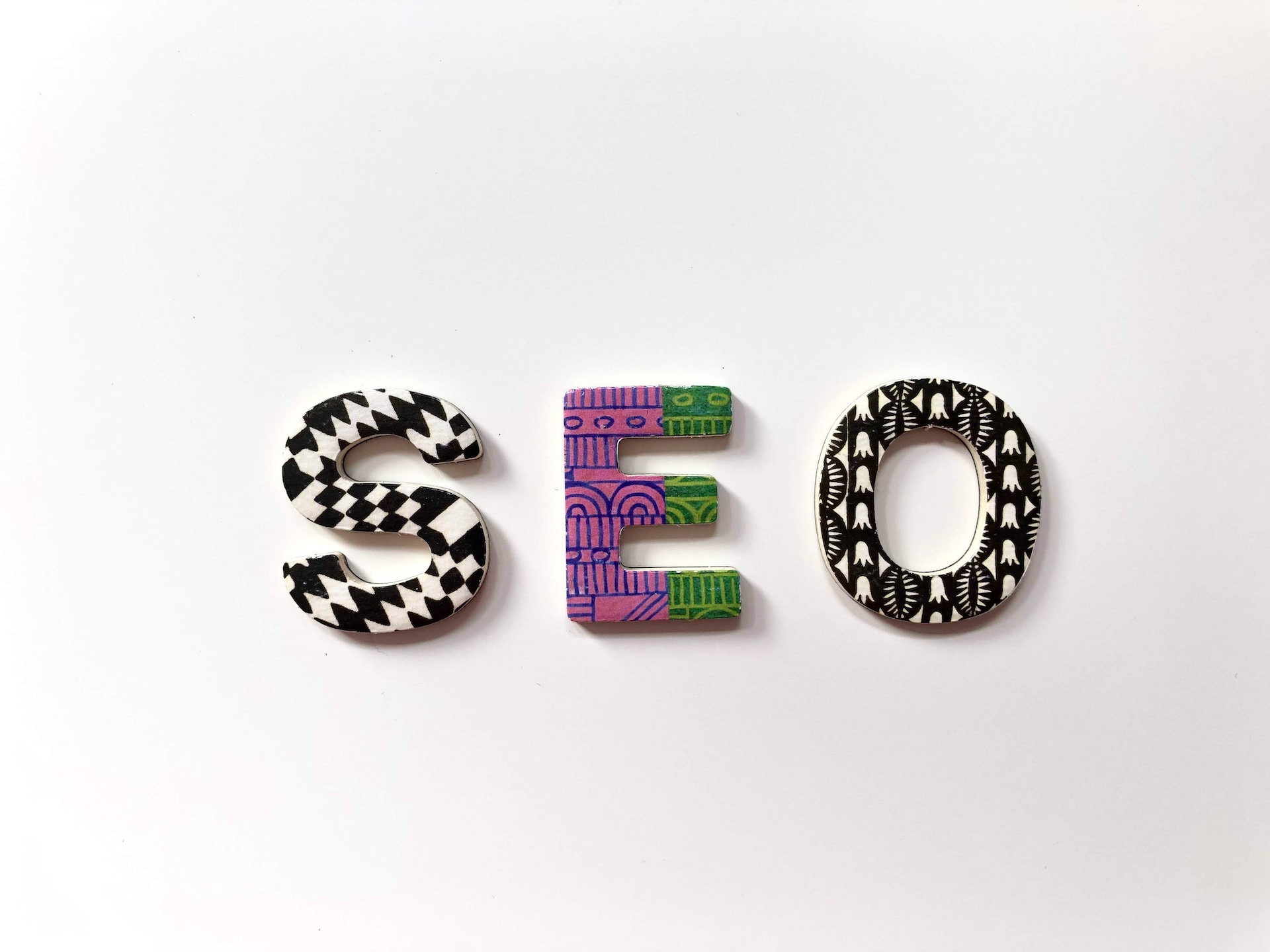
Ever wondered how tomake your website more visible on Google and other search engines? Understanding the basics of search engine optimization(SEO) is like having a secret weapon for online success. This article is all about breaking down the essential strategies and tips - the basic SEO thingsthat every website owner should know.
Why Is SEO Important?
SEOplays a pivotal role in modern marketing strategies, with organic search accounting for a significant 53% of all website traffic. The global SEOindustry is projected to soar to a staggering $122.11 billion by 2028, underscoring its undeniable impact on businesses of all sizes.
The journey of individuals seeking information, products, or services invariably begins with a search. However, the landscape of search has evolved into a fragmented ecosystem, encompassing traditional search engines like Google and Bing, social platforms such as YouTube and TikTok, and even retailer websites like Amazon. Intriguingly, 61% of U.S. online shoppers initiate their product searches on Amazon, surpassing the 49% who begin on conventional search engines like Google.
Trillions of searches are conducted annually, and being "search enginefriendly" across diverse platforms is imperative for businesses. The statistics reveal that a substantial portion of online shoppers use platforms like Walmart.com, YouTube, Facebook, Instagram, and TikTok for their initial product searches.
The significance of SEO lies not only in improving visibility and outperforming competitors in search rankings but also in its impact on the bottom line. Search Engine Results Pages (SERPs) are fiercely competitive, featuring various search features and Pay-Per-Click (PPC) ads, such as knowledge panels, featured snippets, maps, images, videos, top stories, People Also Ask, and carousels.
What sets SEO apart is its sustainability. Unlike paid campaigns that end with the campaign itself or social mediatraffic that can be unreliable, good SEO work endures, providing lasting benefits. SEO is the cornerstone of a holistic marketing approach, aligning with user preferences across paid and organic campaigns, website content, and social media properties.
Understanding and meeting user needs through SEO not only drives essential traffic but also fosters trust. Websites that rank well are perceived as authoritative and trustworthy, characteristics that Google rewards with higher rankings. In essence, SEO is more than just a channel; it is the foundation of a comprehensive marketing strategy that aligns every aspect of a company's efforts with user expectations and businessgoals.
Types Of SEO
SEO encompasses three distinct types, forming a crucial trinity for online success:
- Technical SEO:This involves optimizing the technical elements of a website, ensuring it is structured and configured in a way that search engines can easily crawl and index. Elements like site speed, mobile-friendliness, and proper use of tags fall under the domain of technical SEO. Control over technical optimizations lies entirely with the website owner.
- On-site SEO:Focused on optimizing the content present on a website, on-site SEO aims to make it user-friendly while also aligning with search engine algorithms. This includes keyword optimization, creating high-quality and relevant content, and ensuring a positive user experience. Website owners maintain full control over on-site SEO activities.
- Off-site SEO:This involves building brand assets, such as people, marks, values, vision, slogans, catchphrases, and colors, to enhance brand awareness and recognition. Additionally, off-site SEO activities contribute to demonstrating and growing a brand's expertise, authority, and trustworthiness. Unlike the other two types, off-site SEO involves activities that may not be entirely within the website owner's control, such as earning links from external sites or adapting to changes on external platforms.
Considering SEO as a sports team, the analogy suggests that success requires a robust offense and defense, as well as a loyal fanbase. In this context, technical optimization serves as the defense, safeguarding the website's structure and performance. Content optimizationacts as the offense, driving engagement through valuable and relevant content.
Meanwhile, off-site optimization plays a crucial role in attracting, engaging, and retaining an audience, akin to building a dedicated fanbase for sustained success. While control over off-site activities may be partial, they remain an integral part of the overall SEO strategy.
How Does SEO Work?
Certainly, it seems like you're quoting a passage or introduction that discusses the importance of SEO(Search Engine Optimization) and its components. SEO is a crucial aspect of digital marketing, and the mentioned guide on Search Engine Land appears to highlight the key factors contributing to its success. These factors include:
- Authority and Expertise:The guide is published on Search Engine Land, a reputable and authoritative website with a long history of covering SEO changes. This contributes to the guide's credibility and trustworthiness in the eyes of search engines.
- Backlinks:The guide has earned a significant number of backlinks (324,203 links), indicating that other websites consider it valuable and are linking to it. Backlinks are an essential factor in search engine rankings.
- Reputation with Search Engines:The guide has built a good reputation with search engines over the years. Search engines consider signals like authority, relevance, and trustworthiness to determine rankings.
- Consistent Ranking:The guide has maintained its position at Position 1 in search engine results for an extended period. Consistent high rankings suggest that it continues to meet the criteria that search engines value.
- Components of SEO:The passage outlines that SEO works through a combination of people, processes, technology, and activities. This highlights the multifaceted nature of SEO, which involves strategic planning, efficient execution, and the use of relevant tools and platforms.
- Six Critical Areas of SEO:The text mentions that SEO works through six critical areas: people, processes, technology, activities, knowledge, and process elements. Each of these elements plays a role in the success of an SEO strategy.
It's clear that the passage provides a broad overview of the factors contributing to the success of SEO, emphasizing the importance of a holistic approach involving various elements and components.
Understanding How Search Engines Work
To ensure that your businessis discoverable through search on various platforms, it's crucial to comprehend the technical processes governing search engines and strategically provide the necessary signals for increased visibility. When focusing on traditional web search engines like Google, the search process unfolds in four distinct stages:
- Crawling:Search engines employ crawlers to explore web pages by following links and utilizing sitemaps.
- Rendering:The search engines generate a visual representation of the page using HTML, JavaScript, and CSS information.
- Indexing:The content and metadata of discovered pages are analyzed and added to a database, though not every page on a website is guaranteed to be indexed.
- Ranking:Complex algorithms assess various signals to determine the relevance and quality of a page, influencing its display when users enter a search query.
Optimizing for Google search differs from optimizing for other platforms like YouTube or Amazon. For instance, on Facebook, engagement factors such as likes, comments, and shares, as well as social connections, play a significant role.
On Twitter, signals like recency, interactions, and the author's credibility are crucial. The landscape becomes even more intricate as search engines incorporate machine learning elements into surface content, making it challenging to pinpoint specific factors leading to improved or diminished performance.
Basic SEO Tips
Make Longer Posts
When it comes to getting your website noticed on Google, having good content is super important. It wasn't just about having links or using fancy algorithms. Things like blog posts and videos drew people in.
For Google to really like your site, they prefer your content to be longer—around 2,000 words or more. But here's the catch: it's not just about stuffing in a bunch of words. The content needs to be interesting and valuable to the reader. Quality matters more than just quantity.
Why does longer content matter? Well, the longer people stay on your site reading and watching, the better it is for your website. There's a term called "dwell time," which is basically how much time people spend on your site before going back to Google.
Google sees longer dwell time as a thumbs-up because it means people enjoy what they find on your site. Therefore, having longer and higher-quality content not only aids in getting your website noticed by Google but also keeps users interested and engaged. It's a win-win!
Fresh Contents
Google really likes it when your website has new stuff regularly. It's not just because people like fresh content; it also shows Google that your website is still active and up-to-date.
Now, making new and amazing content all the time can be tough. So, here's a trick: instead of always creating something new, you can go back and update your old popular posts. Let's say you have a post called "Best SEO Tips 2018." You can easily make it relevant for the current year by adding some new information and changing the title to "Best SEO Tips 2019." Just remember to update the post with the current date. It's a simple way to keep Google happy without always starting from scratch!
Use Keywords
Picking the right words is super important! You want to use words that really show what your stuff is all about. But here's the trick: think about what words your customers would use when looking for things like yours.
Make sure the words you pick make sense for what you're talking about. Don't confuse the computer search engines by using words that have nothing to do with what you're selling or talking about in your blog.
But, also, don't go picking fancy words just because. You want words that people are actually typing into Google. It's like having a shop and selling something no one wants—not a great plan! So, choose your words wisely to get the right folks to your website.
Here's a cool trick to make your website show up higher on Google. Instead of just using basic words, you can use more detailed words (they call them long-tail keywords). So, if you're selling sneakers, instead of just saying "shoes," you could say "best running shoes for beginners." This way, you attract people who are specifically looking for what you have.
There's another trick called LSI keywords. These are words that are kind of like buddies to your main word. So, if your main word is "recipe," the LSI words might be "cooking tips" or "easy dinners." They're not exactly the same, but they help Google understand what you're talking about. Using these tricks is like telling Google exactly what you've got, so they can match you up with the right people looking for exactly that.
Optimize The Title, Meta, Heading, And Sub-Heading Tags
Let's talk about making your website super visible on Google by tweaking a few things. Imagine your website is a book, and these tweaks are like making the book cover stand out on a shelf.
Title Tag
Okay, first up is the title tag. It's like the book title on the cover. Make sure each page has a unique title (like each chapter in your book). Keep it short, like 60 characters. And don't forget to include words that people might type into Google to find your stuff. Think of it as telling Google, "Hey, my page is all about this!"
Meta Tag Or Meta Description
This is like the teaser on the back cover. It's a short paragraph under the title in Google search results. Keep it snappy and under 160 characters. Use words that people might be looking for. It's like saying, "Check out my page because it's all about these awesome things!"
Headings And Subheadings
These are like the chapter titles in your book. There's a main one, like the big idea of your page, and a few smaller ones under it. Stick your main keyword in that big title (like the main theme of the chapter). The smaller titles should also have keywords. But, remember, make it easy for people to read—not just for Google!
Optimize Your URLs
Even though people might not pay much attention to your website's URLs, they actually matter for basic SEO (making your site show up on Google). The trick is to keep them simple and easy to read. Google likes it that way because it helps them understand what your content is about.
So, instead of having numbers in your URLs, use words that describe your content. Keep it short and make it logical. Imagine that it's like giving your webpage a clear and easy-to-follow address.
And hey, here's a bonus: you can even put your main keywords in the URL. For example, if your page is about the best movies, your URL could be something like "domain.com/best-movies."
But hold on! If your current URLs are doing fine, don't rush to change them. Changing them could confuse Google and your visitors. It's better to start using these tips for your new content.
Backlinks
A backlink happens when one website talks about another website and puts a link to it. Now, here's the deal: not all backlinks are created equal. You want backlinks from really good websites that have stuff in common with what you're talking about. So, if your blog is all about SEO marketing, it's awesome to get links from other sites that talk about marketing.
But it's not just about any link; the quality of the website giving you the link matters a lot. If the website linking to you is a big deal in its field, that link is like a gold star for your site. Google kind of sees it like people voting for your content, saying it's helpful. The better the website links to yours, the more Google thinks your site is useful.
So, go for those high-quality backlinks, especially from websites that know their stuff. It's like getting a boost to your website's popularity, and Google really likes that. You can even use special tools to help you find and grab those awesome backlinks. It's like collecting gold stars for your website!
Optimize Your Images
Including optimized images is a crucial aspect of content optimization, and thus, we've incorporated image optimization into this fundamental SEO guide. Visual content, such as images, is known for its ability to capture attention more quickly and effectively than lengthy paragraphs of text.
Despite the appeal of images to readers, search engines often struggle to interpret them. To facilitate accurate indexing by search engines, it's advisable to use alt text. Alt text, embedded within HTML code, provides a description of the image. It's essential to ensure that each image has a detailed and precise description in its alt text.
Beyond aiding search engines, alt texts play a vital role for individuals who are blind or visually impaired. They rely on special computer software that reads text aloud, and alt text serves as a means for them to understand the content. Additionally, when images fail to load, the alt text is displayed, informing readers about the intended content of the image.
Moreover, optimizing images enhances your chances of ranking high on Google Images, potentially generating additional traffic for your website. While it's advisable to craft descriptive alt texts, caution should be exercised to provide truthful descriptions and avoid keyword stuffing.
Basic SEO Things - FAQ
What Things Are Included In SEO?
SEO techniques include keyword strategy, content strategy, site audits, on-page optimization, off-page optimization, content development, and competitor analysis.
What Are SEO Skills?
SEO mostly revolves around two strategies: Optimizing site architecture (the actual coding and design of a website) Optimizing site content (the text of sales pages, blog posts, product descriptions, etc.)
What Are Three Pillars Of SEO?
For aspiring digital marketing and SEO professionals, understanding the three pillars of SEO - Technical, On-page, and Off-page - is crucial. These factors influence your site's performance and crawlability, the quality and structure of your content, and the off-site factors that boost your site's credibility.
Final Words
So, there you have it! Navigating the online world can be tricky, but mastering these basic SEO things is like having a superpower for your website. By applying these basics, you're not just impressing search engines; you're making your site more awesome for your visitors too. In this digital game, these basics aren't just important; they're the key to your website's success now and in the future. Keep it simple, keep it smart, and watch your website shine!

